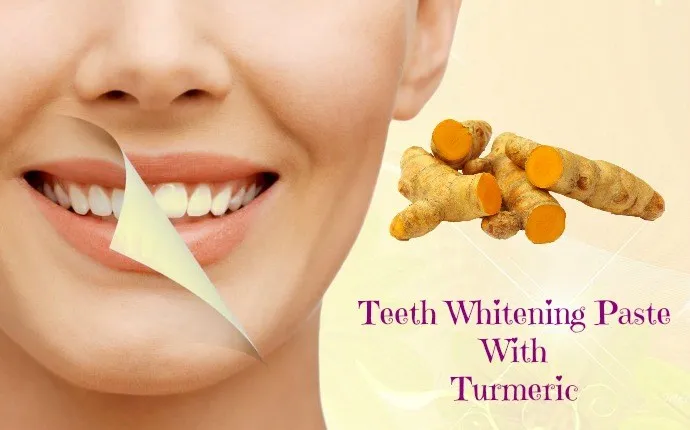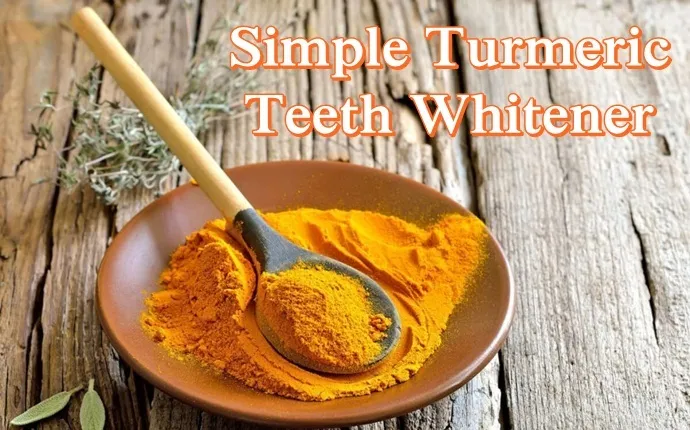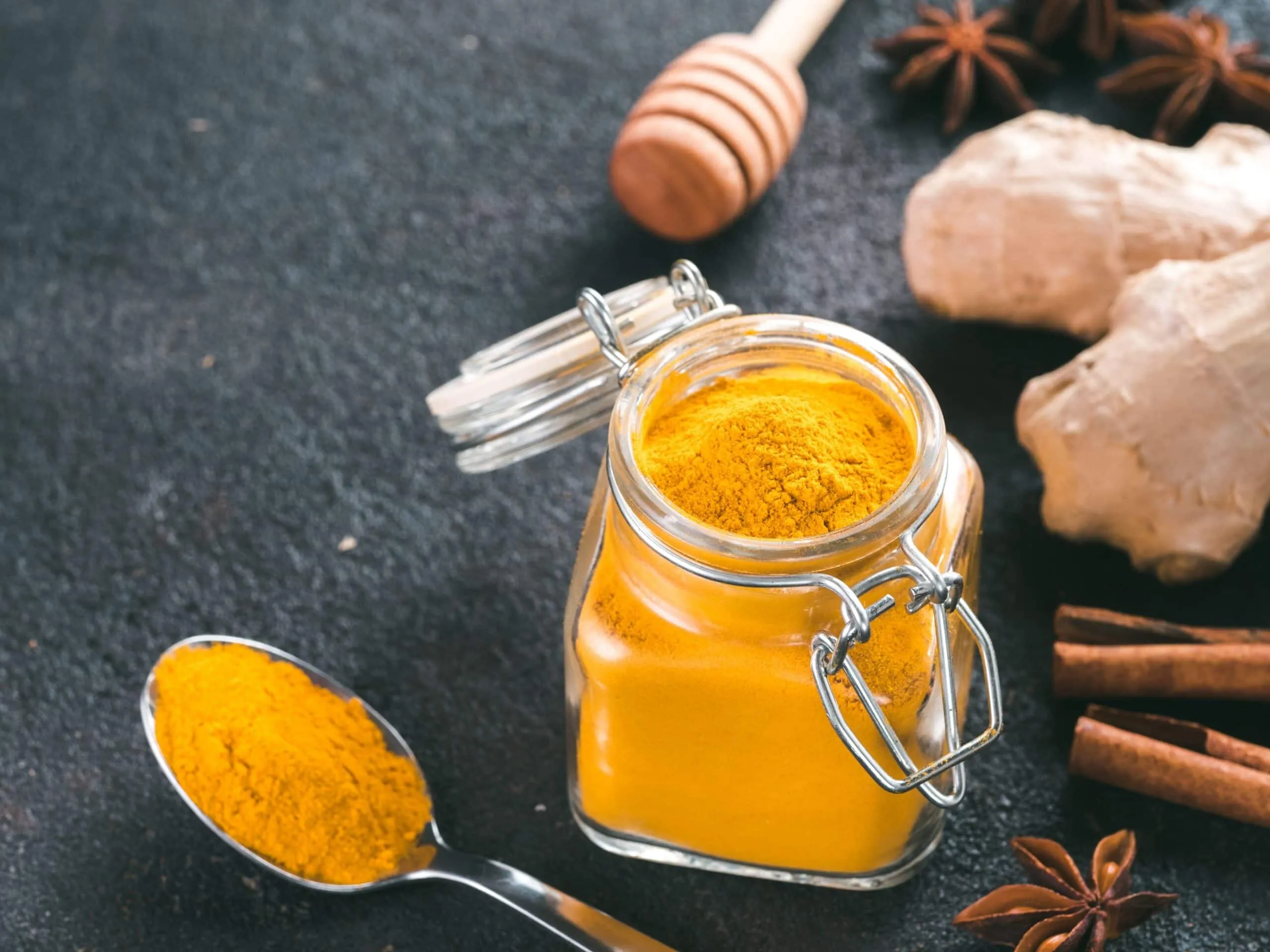What is Turmeric and Why Use It for Teeth?
Turmeric, a vibrant yellow spice derived from the Curcuma longa plant, has been a staple in Ayurvedic medicine for centuries. Beyond its culinary uses, turmeric is celebrated for its potential health benefits, including anti-inflammatory and antioxidant properties. In recent years, turmeric has gained popularity as a natural teeth whitening agent. This trend stems from its active compound, curcumin, which some believe can help remove stains and brighten teeth. Many people are now seeking natural alternatives to conventional teeth whitening methods, making turmeric an appealing option due to its accessibility and perceived safety. The rise in its use reflects a broader interest in holistic approaches to health and beauty, and the desire for solutions that are both effective and gentle on the body. This guide will delve into the science behind turmeric’s use in teeth whitening, exploring its effectiveness, how to use it, and what to be aware of.
The Composition of Turmeric
Understanding the composition of turmeric is crucial to grasping its potential benefits for teeth whitening. The primary active component in turmeric is curcumin, a polyphenol responsible for its characteristic yellow color and many of its health-promoting effects. Curcumin constitutes approximately 2-8% of turmeric. Besides curcumin, turmeric contains essential oils, carbohydrates, proteins, and dietary fiber. The essential oils, which include turmerone, atlantone, and zingiberene, contribute to turmeric’s aroma and taste. The fiber content aids in digestion, while the other compounds contribute to the overall nutritional value of the spice. When considering turmeric for oral health, the focus is on curcumin. However, the other components contribute to the spice’s overall properties and influence how it interacts with teeth and gums. The quality and origin of turmeric can affect its composition, influencing the concentration of curcumin and other beneficial compounds. Therefore, choosing high-quality turmeric is important for any intended health benefits.
Curcumin and its Benefits

Curcumin is the star compound within turmeric, and its benefits extend beyond simple teeth whitening. This potent antioxidant has been extensively studied for its anti-inflammatory properties. Inflammation is a root cause of many health issues. Curcumin can help to neutralize harmful free radicals and reduce oxidative stress, which contributes to cellular damage. In the context of oral health, these anti-inflammatory effects can be particularly beneficial. Curcumin may help to soothe irritated gums and reduce the risk of gingivitis. Studies suggest that curcumin can also support overall immune function and provide antimicrobial benefits, which could help combat bacteria in the mouth. The antioxidant properties of curcumin contribute to overall health. While research on curcumin for teeth whitening is ongoing, its broader health benefits provide a compelling reason to consider turmeric as part of a holistic approach to oral and overall health. Its ability to interact with multiple biological pathways makes it a versatile compound with potential advantages.
How Does Turmeric Help Whiten Teeth?
The mechanisms by which turmeric can potentially whiten teeth involve several key interactions. Firstly, turmeric acts as a mild abrasive. When mixed with other ingredients to form a paste, the fine particles of turmeric help to gently scrub away surface stains from coffee, tea, and other foods. This abrasive action is a mechanical process which doesn’t change the intrinsic color of the teeth. Secondly, curcumin, the active component, possesses antioxidant and anti-inflammatory properties. While the direct whitening effect of curcumin on teeth is not fully understood, the reduction of inflammation in the gums may contribute to healthier-looking teeth. Some believe that curcumin may help to break down plaque and bacteria, which could improve the appearance of teeth. However, it’s essential to note that the scientific evidence supporting turmeric’s teeth whitening abilities is still developing. While anecdotal evidence abounds, more rigorous studies are needed to fully understand its efficacy and mechanisms. Using turmeric consistently as part of a comprehensive oral hygiene routine appears to deliver the most noticeable results.
Fact 1 Does Turmeric Actually Whiten Teeth?
Whether turmeric effectively whitens teeth is a subject of ongoing debate and research. While many users report seeing some degree of whitening, scientific evidence is still limited. Most studies on curcumin focus on its anti-inflammatory and antioxidant properties, not specifically on teeth whitening. The anecdotal evidence suggests that turmeric can help to remove surface stains. However, it’s unlikely to produce the dramatic results of professional teeth whitening. The effectiveness of turmeric can vary depending on the individual, the type of stains present, and the method used. Factors such as the natural color of your teeth, the type of food you consume, and the consistency of your oral hygiene routine will all play a role. Additionally, the quality of the turmeric can influence its effectiveness. High-quality, pure turmeric powder is more likely to contain a higher concentration of curcumin. While turmeric may offer some benefits, it is essential to temper expectations and understand that it’s not a guaranteed solution for everyone. Combining turmeric with other oral hygiene practices, such as regular brushing and flossing, may offer the best results.
Fact 2 Preparing Turmeric for Whitening

Preparing turmeric for teeth whitening typically involves creating a paste. A common method is to mix turmeric powder with water to achieve a thick consistency. Some people add coconut oil to the mix. Coconut oil can act as a carrier for the turmeric and may help to reduce staining. Another popular addition is baking soda. The abrasive nature of baking soda can enhance the cleaning effect. To use the paste, apply it to a toothbrush and gently brush your teeth for a few minutes. It’s recommended to start with shorter durations, like one to two minutes, to assess how your teeth and gums respond. After brushing, thoroughly rinse your mouth with water. Some people find it beneficial to brush their teeth with regular toothpaste afterward to remove any remaining yellow residue. The frequency of use can vary, but many users begin with a few times a week and adjust based on their results and any sensitivity. It’s important to choose high-quality turmeric powder, and ensure that all ingredients used are safe for oral use.
Best Turmeric Recipes for Whitening
Several turmeric-based recipes can be used for teeth whitening. A simple recipe involves mixing equal parts turmeric powder and water to form a paste. This is a straightforward method. For added benefits, combine turmeric with coconut oil and a pinch of baking soda. Coconut oil acts as an anti-inflammatory agent and may improve the texture of the paste. The baking soda adds an extra cleaning effect. Another recipe combines turmeric, activated charcoal, and a few drops of peppermint essential oil. Activated charcoal helps to absorb stains and peppermint oil provides a fresh taste. Regardless of the recipe, ensure the ingredients are of high quality. The ingredients should be mixed into a smooth paste and applied to the toothbrush. The duration of brushing should be short, and the mouth should be thoroughly rinsed after brushing. Start by trying a few times per week to assess any potential sensitivity. Adjust the frequency of use according to your results and comfort level. Remember to consult with a dentist before using any of these recipes, especially if you have existing dental issues.
Fact 3 Potential Downsides of Using Turmeric
While turmeric is generally safe, it has potential downsides when used for teeth whitening. One of the most common concerns is staining. Turmeric can leave a yellow residue on the teeth, especially if not rinsed off thoroughly. This staining is typically temporary, but can be aesthetically unappealing. Another potential issue is the abrasive nature of turmeric, especially when used with other abrasive agents like baking soda. Overuse of abrasive materials can erode the enamel, making teeth more susceptible to sensitivity and decay. Some individuals may also experience allergic reactions or sensitivity to turmeric. Symptoms can include irritation of the gums or soft tissues. Furthermore, turmeric can interact with certain medications, so it is important to consult with your doctor before adding it to your routine, especially if you are on any medications. It’s also worth noting that turmeric may not be as effective at whitening teeth with deep-seated stains. It mainly helps with surface stains. When using turmeric, monitor your teeth and gums for any adverse effects and discontinue use if necessary. Be sure to address any concerns with your dentist.
Fact 4 Alternatives to Turmeric Teeth Whitening

If turmeric isn’t the right fit, or if you’re looking for alternatives, many other teeth whitening options are available. Over-the-counter whitening toothpaste, containing mild abrasives and bleaching agents, can help to remove surface stains and brighten teeth. Whitening strips are another popular choice. These contain a peroxide-based bleaching agent and are easy to use. For more dramatic results, professional teeth whitening is an excellent alternative. Dentists use stronger bleaching agents, often with the help of light or laser activation, to achieve significant whitening. These procedures are performed under professional supervision. In-office treatments offer the fastest and most effective results. For those seeking natural alternatives, oil pulling with coconut oil is a possibility. While the evidence is limited, oil pulling may help remove some surface stains. Another option is using baking soda, although it should be used with caution because of its abrasiveness. Consider the pros and cons of each method based on your needs and preferences. Consult your dentist before making any changes to your oral hygiene routine.
Fact 5 Tips for the Best Results with Turmeric
To maximize the benefits of turmeric teeth whitening, consider these tips. First, choose high-quality, organic turmeric powder to ensure the purest form of the spice. Create a paste with water or coconut oil, and brush gently, avoiding excessive pressure to prevent enamel erosion. Start with short brushing sessions (1-2 minutes) to assess your teeth’s response and gradually increase the duration. Rinse thoroughly after each use to remove any yellow residue. Combine turmeric with other oral hygiene practices, such as brushing with fluoride toothpaste and flossing regularly. Be consistent with your routine for the best results, but also be patient, as results may take time to become noticeable. Consult your dentist regularly to monitor your oral health and receive professional advice. They can assess your teeth and gums. Avoid combining turmeric with other harsh abrasives, like excessive baking soda, to prevent enamel damage. If you experience any sensitivity or irritation, stop using turmeric and consult your dentist. Remember that turmeric is a supplement to your oral hygiene routine. It is not a replacement for regular dental check-ups and professional cleaning.
